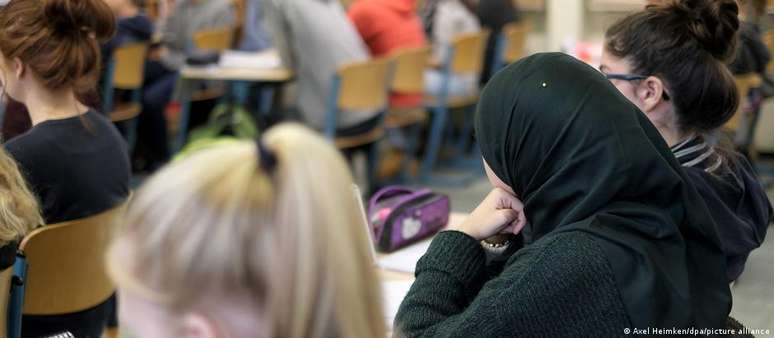In Germany, parents’ origins increasingly determine their children’s academic success and professional future. At the same time, the country needs skilled labor and there are many job vacancies in Germany. In fall 2023 (spring in the Southern Hemisphere), the number of open positions exceeded 1.7 million. In 200 professions there is more demand for work than supply. The deficit is particularly pronounced in sectors such as medicine, nursing, construction, IT, transport and logistics, education, but also in manual professions requiring technical training – a broad spectrum of activities ranging from plumbing and electrical to carpentry and bread making.
If the lack of labor were a purely numerical issue, it would not exist. This is because at the beginning of 2024 Germany paid unemployment insurance or a basic living income, the so-called Bürgergeld, to 4.8 million people able to work. Of these, however, more than half had no technical training and, according to the Federal Employment Agency, the chances of finding a place in the job market were low.
And another fact from the agency’s monthly statistics attracts attention: one in four long-term unemployed people doesn’t even have an education.
Germany poorly positioned in the international rankings
International bodies such as the Organization for Economic Co-operation and Development (OECD) have been pointing out for years that Germany is doing little to reduce the number of people with low qualifications. Although the German education system has made progress by training more young people in secondary and higher education, the number of those without basic education has remained constant.
Every year, the European Union’s statistical body, Eurostat, records the number of young Europeans aged between 18 and 24 without a secondary or vocational education diploma. Between 2013 and 2020 in Germany they were around 10%. In 2022 they rose to 12.2%.
Across Europe, the situation is worse only in Hungary, Norway, Spain, Romania and Iceland. If only the 27 countries of the European Union are considered, Germany has the fourth worst performance.
The German education system has its specificities
However, it should be noted that Eurostat statistics include in this dropout rate young people who complete the most basic level of compulsory schooling in Germany – up to grade 10, attended by young people between 15 and 16 years old.
In Germany all children receive the same education in the initial classes, which can vary from four to six years from one state to another. After this period, teachers decide, based on their performance, what type of school they will be sent to and, depending on this, they will have different teaching methods and contents, with an orientation towards a technical profession or higher education.
Each of Germany’s 16 Länder can regulate secondary and primary education in its territory, so there are regional differences between the systems.
In Bavaria, for example, children attend primary school together for four years. From that moment on they are sent by the teachers to a Hauptschule (for those with lower academic performance), to a Realschule (for those with average performance) or, in the case of the best trained, to the Gymnasium.
In Berlin, early childhood education lasts six years and it is the parents who decide whether the child will then attend the Gymnasium or secondary school, which offers three types of completion diplomas.
School dropout is higher among migrants
School dropout is a problem that affects all German states. In 2001 the rate was almost 10%, in 2013 it dropped to just over 5% and has since grown again. In 2022 it was around 7%, or around 52 thousand people.
According to the Federal Institute for Demographic Research (BiB), the phenomenon mainly affects young people with a migrant background – an expression which, in German slang, designates people with at least one parent born without German citizenship.
If in 2013 the origin, migratory or otherwise, was not detectable in the statistics, in 2022 the picture was different: among Germans with no history of migration in the family and aged 25 years, only 3% of men and 2 % of women did. they did not have a basic education diploma, while among people with foreign roots these rates were 12% and 10% respectively.
This has profound consequences for the professional future, as analyzes by the Federal Institute for Vocational Education and Training (BIBB) show. Among adults aged 20 to 34, more than 10 percent of Germans without a migration background had no vocational training. Among children of migrants born and raised in Germany, this rate was almost 20%.
Success in school depends on origin
For years, education experts have criticized the German school system for leaving too many young people behind.
The latest report from the Program for International Student Assessment (Pisa), commissioned by the OECD, shows that German students have never performed so poorly in mathematics, science and reading skills.
The decline in performance is partly attributed to the disruption of classes during the pandemic. However, much more significant is the inequality of opportunities that persists over the years. “In Germany, educational success still depends on social origin,” criticizes Anja Bensinger-Stolze of the Union for Education and Science.
The most affected are those who “do not have a good learning environment at home”: “Due to the disruption of lessons, the lack of qualified staff and support systems, their educational opportunities are becoming fewer and fewer.”
Language barriers
The problems begin in kindergarten. Currently one in five children between the ages of 3 and 6 does not speak German at home. In Hesse, Berlin or Bremen this is the situation for around a third of children. It would be even more important for them to attend a nursery, but according to a federal government report only 81% of all children with a migrant background do so.
This is mainly due to the shortage of places in these institutions, which at a national level reaches around 350 thousand.
If children do not master German well enough at the start of school, they will find themselves at a disadvantage from the start. This demotivates them. They need individual support, from social workers and education professionals. But all this, like teachers, is in short supply.
Growing shortage of skilled labor in schools
There are currently 14 thousand teachers missing across the country, and this number is expected to increase. Trade unionist Bensinger-Stolze predicts that this deficit will reach 56,000 full-time jobs by 2035. “Unfortunately, politicians have not taken the situation seriously for a long time. Therefore, it is very difficult to alleviate or improve the situation in the short term .”
The situation even threatens programs that aim to reduce school dropout rates.
For young people who need the support of these professionals, this is bad news.
Potential to explore
Those who have difficulty interpreting poetry and doing advanced calculations may have talents and practical skills. They are the target audience for companies looking for interns willing to work and learn three days a week to find a path towards a suitable profession.
The director of the Federal Employment Agency, Andrea Nahles, is in favor of starting career guidance in school as early as the fifth year, a level that children usually reach at the age of 10. Regular internships should become mandatory in all types of schools in order to discover and promote more talents.
Furthermore, from 1 April 2024, young Germans will be guaranteed, by law, the right to vocational training – even to those who have dropped out of school.
Source: Terra
Rose James is a Gossipify movie and series reviewer known for her in-depth analysis and unique perspective on the latest releases. With a background in film studies, she provides engaging and informative reviews, and keeps readers up to date with industry trends and emerging talents.








